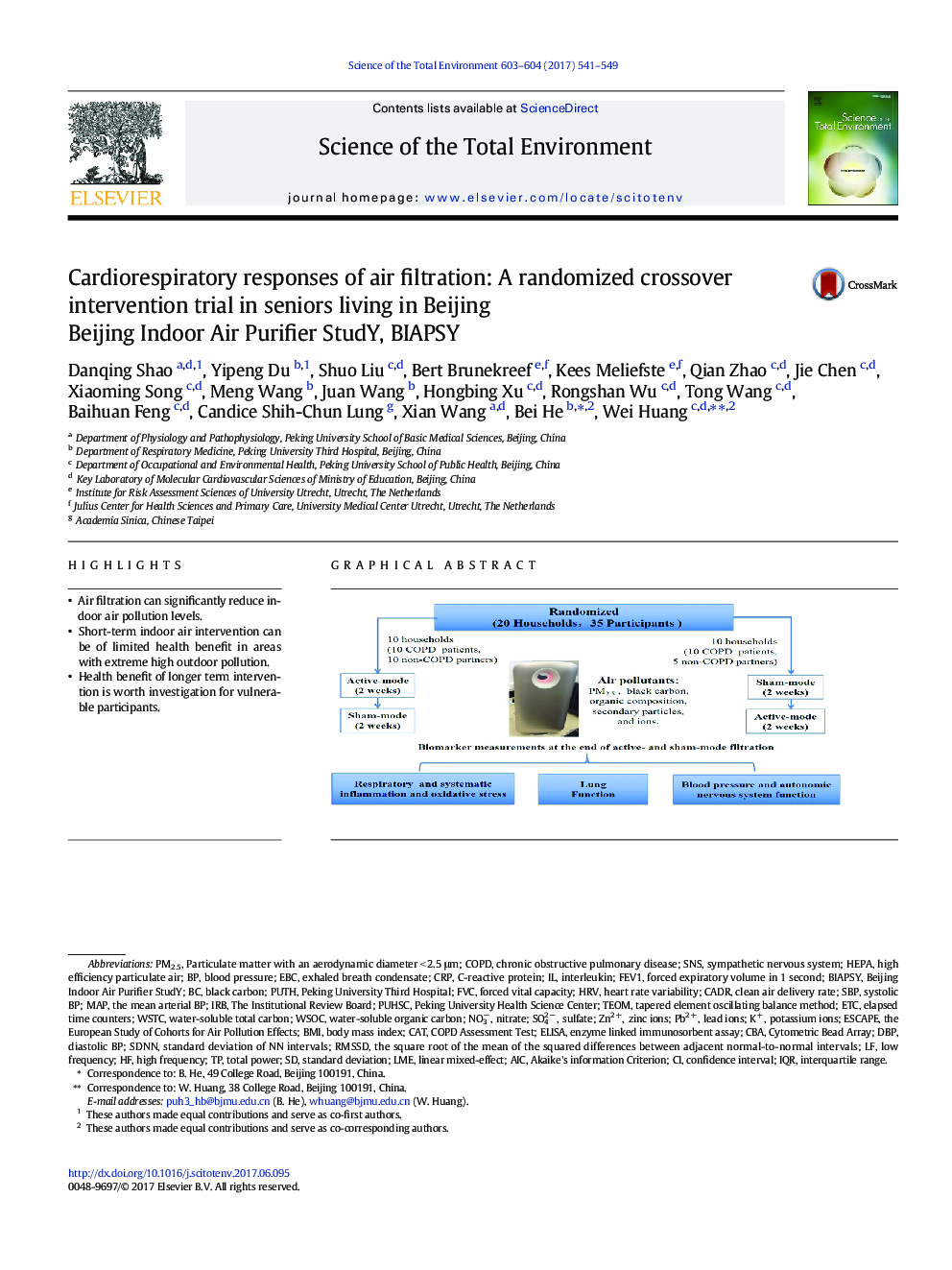| کد مقاله | کد نشریه | سال انتشار | مقاله انگلیسی | نسخه تمام متن |
|---|---|---|---|---|
| 5750325 | 1619696 | 2017 | 9 صفحه PDF | دانلود رایگان |
- Air filtration can significantly reduce indoor air pollution levels.
- Short-term indoor air intervention can be of limited health benefit in areas with extreme high outdoor pollution.
- Health benefit of longer term intervention is worth investigation for vulnerable participants.
In this Beijing Indoor Air Purifier StudY (BIAPSY), we conducted a randomized crossover intervention trial in a panel of 35 non-smoking senior participants with free-living, with and without chronic obstructive pulmonary disease (COPD). Portable air filtration units were randomly allocated to active-(filter in) for 2 weeks and sham-mode (filter out) for 2 weeks in the households. We examined the differences in indoor air pollutant concentrations in 20 study homes and a suite of cardio-respiratory biomarker levels in study participants between filtration modes, with and without adjustment for potential confounders. Following active filtration, we observed significant reductions from 60 ± 45 to 24 ± 15 μg/m3 in ten-day averages of indoor PM2.5 and reductions from 3.87 ± 1.65 to 1.81 ± 1.19 mâ 1.10â 5 in ten-day averages of indoor BC, compared to sham-mode filtration. The major components of indoor PM2.5, including water soluble organics, NO3â, SO42 â, Zn2 +, Pb2 + and K+, were also reduced significantly by 42% to 63%. However, following active filtration, we only observed significant reductions on systemic inflammation measured as of IL-8 at 58.59% (95% CI: â 76.31, â 27.64) in the total group of participants and 70.04% (95% CI: â 83.05, â 47.05) in the subset of COPD patients, with adjustments. We were not able to detect improvements on lung function, blood pressure, and heart rate variability, following short-term intervention of two-week active air filtration. In conclusion, our results showed that indoor air filtration produced clear improvement on indoor air quality, but no demonstrable changes in the cardio-respiratory outcomes of study interest observed in the seniors living with real-world air pollution exposures.
311
Journal: Science of The Total Environment - Volumes 603â604, 15 December 2017, Pages 541-549
